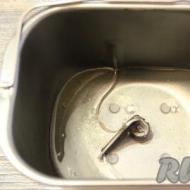
The switch of weight with a fuse. How to install a mass switch on a vaz. Ground connection bypassing the alarm
Many motorists would probably be happy to install a device in their car, with the help of which, without any effort and without removing the terminals from the battery, it would be possible to disconnect the mass of the car.
In this article, we will focus on just such a device, or rather, on an electric mass switch.
There is nothing complicated in installing this device, since you can purchase this switch at any auto equipment store and easily attach it under the hood of your car.
Also exists type of mass switches, type RAD1, with remote control. With this type of switches, you can turn off the electrical network of the car directly from the passenger compartment without opening the hood of the car once again. True, this device itself remains energized and is slightly different from installing a conventional switch. To install it, you will need a long cable with a negative charge, which will need to be laid directly from the mass to the passenger compartment, having previously drilled a small hole near the engine compartment shield.
This diagram shows a mass switch, without any mechanical contacts. This type of switch is more reliable and can serve you for a long time.
Also, this device can be used as an anti-theft device, since the mass switch has two semiconductor devices, this is a 2-watt transistor, presented on wiring diagram, and a 1-watt diode.
The transistor serves as an electromagnetic relay, which, in the presence of even a weak current, operates on the main electrode. A weak current can be applied by closing a small switch of type S1, which must be installed in the passenger compartment in advance.
In this case, when current is applied, the 2-watt transistor will open, while the resistance will decrease by a lot and little electricity will be able to pass through this device. But it is worth considering that the transistor can pass current in only one direction, namely from the battery to the car's on-board network itself.
In order for the battery to be recharged directly from the car's generator, we install the VI diode in the opposite polarity from it.
The diagram shows:
1-switch; 2-fixing terminal; 3-duralumin corner; 4-diode; S-transistor.
This diagram shows the electrical mass switch device itself. On the duralumin corner, 50x50x3mm in size and 100mm long, two semiconductors are installed. Two holes are drilled on one shelf, one 21mm in size for a transistor, and the second 62mm in size for an electric diode with an average power rating.
A bolt hole is drilled on the other side of the shelf, with which the entire device will be attached to the car body. All connections are fastened with a stranded wire, and the output of the cathode of the transistor is connected to the battery terminal with a wire with a metal braid.
After manufacturing, the finished device must be placed in a casing made of a metal product, pre-painted in the color of the car body. In order not to create unnecessary holes in the car body, it is worth finding holders that attach the brake pipe to the engine compartment. In this tube, carefully knock out the bottom. The result should be a small 5mm hole between the engine compartment and the car interior. Through this very hole we pass the control cable.
Next, we disconnect the cover that covers the steering column, it is necessary to drill a hole of small diameter in it and install a switch. This switch should have two outputs, we connect the main wire to one of them, and the wire to the other, which is connected to the mass of the car.
I read the comments. Apparently, most of the circuit breakers know that they are. And how they work or their parameters are a completely dark forest. And even Wikipedia does not have knowledge.
And instead of producing a bunch of comments, I'll write one big one.
For the author
I will write far from the first - such a discharge of the battery is abnormal. We need to look for the problem.
And as noted below, the generator current may well be more than the maximum allowable continuous current for the machine (in this case, 71.2A).
Battery
Here is more general information:
Well, the starting current indicated on the battery is 640A, apparently the author does not bother either
This is the nominal value of the battery limit. This is not the value that you need to focus on in this case.
Again - the discharged part of the battery (even 13%) in the cold begins to undergo sulfation, that is, irreversible degradation of the battery.
Is not a fact. In our university, a battery was lying around, which stood for 2 or 3 years in an unheated room (remains of old research). Its capacity was only 10% of the nominal value.
As a result of repeated charges / discharges with a very small current, it was brought back to life with a capacity of 95%. It was then driven for another week, there was no drop in capacity. Then they disposed of it.
Sulfation is not irreversible, but in terms of time it is meaningless (1.5 months of constant charges / discharges were spent on restoration).
Switch
A bit of theory.
Each automaton labeled A, B, C, D, K, and Z has certain exact values (). I will focus on B, C, D, as the most common and applicable (the rest are often the development of firms for specific purposes).
Each circuit breaker has two categories of two main indicators according to international standards:
Overload current
- Short circuit current
Index:
Maximum non-operating current
- Minimum guaranteed operation current
In general, these values are as follows for overload after 1 hour (trip by thermal energy) for circuit breakers up to 63A (type B,C,D)
Maximum non-operating current = 1.13 rated current
Minimum guaranteed trip current = 1.45 rated current
For a short circuit, these values differ for circuit breakers (so-called electromagnetic tripping without delay):
type B - 3*In and 5*In
type C - 5*In and 10*In
type D - 10*In and 20*In
What happens between the lines - no one can and will not guarantee. In principle, the circuit breaker can operate immediately from the minimum value or not to operate until the maximum. And you need to look based on your own requirements.
Example of current-time lines of circuit breakers 63 A from Siemens B, C, D series 5SY
Now for the errors in the comments:
Speaking of current, first of all we are talking about the most protective function of the machine. It is rated at 63 amps and with more current, it will open the circuit
It will not pass out - it will need more than 100 amperes in this mode - electromagnetic protection.
There, the value is even greater, the figures are given above.
But after several operations, the "sensitivity" of the thermal relay may increase.
After several operations in a row - it is possible, but if we are talking about “it worked, turned on - everything is in order”, then the behavior will not change during the declared period of operation (should not be from a normal manufacturer).
But, firstly, not all machines have them, and secondly, they work at least ten times more than the nominal value, so if it does not work, then everything is in order.
Depends on the letter of the machine, I described in detail above.
does it bother you that the starter current is more than 200A maybe?
put the machine on 60 amps, while starting currents can reach up to 200-300 amperes - the decision is not correct.
Starting current for C63A can be no more than 315 A. This is how they often put it (after all, he also has to turn off the short circuit, because D is not always suitable).
That is, if you put a 64 A / 12 V switch into a network with a voltage of 230 Volts and a consumer eating 64 Amperes, nothing will change?
I didn't say that. To be precise, there is not enough data to answer this.
The machine is designed for alternating current, it's the same as the constant in auto, but it's variable.
According to the link I gave above to ABB (this one), the S200 series machines are described, which can be used in direct current with a voltage of 24V. The only thing is that the electromagnetic trigger works for currents 1.5 times higher.
In principle, almost any machine can be used without problems at 60V from a major manufacturer without problems. In the case of ABB - from 24V.
150A, depending on the letter on the machine, it will be kicked out either with a probability of 50 or with a probability of 100% on such a starter.
You can take a look at the chart above from Siemens. Such a machine can knock out after 7 seconds at 150 A regardless from a letter.
on this collective farm, a couple of volts will easily sink if you turn on all the lights and heating
The resistance of the machine at 63A is somewhere around 0.003-0.004 ohms. At 200 A, this is 0.8V. Unpleasant, but as long as the battery is new - not critical.
A conventional machine is designed for a supply cable with a cross section of 6-10 squares; to shove it into the machine obviously had to slaughter the cross section of the wire
What about googling? As a rule, a 63A machine allows you to connect up to 35 mm² single-core or 25 mm² stranded. Your 6-10 is for 16A-25A machines, maybe 40A (but only with open laying of cables and wires, since the machine must protect the wire from overload).
The C63 machine is still back and forth, it works within 10 s for currents of 315 ... 630A.
Siemens has up to 10 seconds in the version above (switch 5SY), here you need to look at a specific manufacturer or even the lineup(Siemens also has longer ones for the same letters, but there are few of them).
Many cars and buses, especially domestic ones, are equipped with a simple and effective means of protecting the battery from discharge during a long stop - a remote mass switch. Read everything about this device, its design, operation, installation and operation in the article.
Purpose of the remote mass switch
When the car is parked, its battery gradually loses its charge. The reason for this phenomenon is simple - there are always non-switchable current consumers in the car, of which the alarm, clock, radio and others consume the most power. And if after a short stop (even for two or three days) the battery is able to provide energy for the starter to work, then in a week or two the battery can be discharged "to zero". Therefore, when parking for a long time, it is recommended to disconnect the battery from the on-board network - for this, a special remote switch (or, conversely, a switch) of the ground is used.
- an electromechanical or electronic switching device designed to disconnect the battery from all consumers of the vehicle's on-board electrical network. This switch, as its name implies, is controlled remotely using a button in the cab.
The remote mass switch performs two key functions:
- Complete disconnection of the battery from the on-board network of the car / bus;
- Performing the functions of an anti-theft agent (immobilizer).
Thus, the switch helps not only to save battery power, but also prevents theft. vehicle. The hidden installation of the switch (as well as its button at the driver's seat) does not allow the attacker to start the car engine or require him to break into the battery compartment, which will attract the attention of others.
It should be noted that remote mass switches are used mainly on trucks and buses, and practically did not gain distribution on passenger cars(with the exception of UAZs and the like). The fact is that trucks and buses are not equipped with alarms and other means that need to be constantly connected to a power source. If a tachograph or a satellite transport control system is installed on the car, then these devices usually have their own battery.
Types and design of mass switches
Currently, there are two fundamentally different types of remote mass switches:
- Electromagnetic switches;
- Electronic (thyristor) switches.
Electronic switches are built on the basis of thyristors, they have gained popularity among owners of domestic cars VAZ, "Niva" and others. Such switches are designed for small currents, therefore they are not suitable for trucks; electromagnetic switches are used in heavy vehicles, which will be discussed later.
The basis of the mass switch is a housing (usually cylindrical), which contains three nodes:
- An electromagnet with an anchor and a rod is located in the upper part. Usually the anchor is combined with a button closed with a sealed rubber cap. On the side of the switch housing, there are two terminals for supplying current to the winding;
- Latch (mechanism for transferring force from the anchor to contact device) - located in the middle part, it ensures the transfer of force from the armature to the contact device and fixing the contacts in the closed position (the same mechanism is used in conventional buttons with fixation);
- Contact device - located at the bottom of the switch, consists of a contact disk mounted on a latch and two power terminals (threaded with nuts).
Functions as follows. With a short-term supply of current to the winding of the electromagnet, its armature is retracted, and the rod connected to it through the latch sets in motion the contact device - the contact disk connects the terminals and the battery is connected to the ground. In this case, the latch is installed in this position and ensures constant pressing of the disk to the contacts. After connecting the battery to the mass, the supply of current to the electromagnet is no longer needed, since the contact device is held by the latch.

To disconnect the battery from the ground, you need to apply current to the electromagnet winding again, the armature will retract and press the latch with the rod - in this case, the latch will switch and raise the contact disk. As a result, the battery will be disconnected from the ground.
The switch can also be operated manually. For this, a button is provided on it, which is directly connected to the armature of the electromagnet. When the button is pressed, the armature enters the electromagnet winding and all the processes described above take place.
Options and features of the installation of remote mass switches
The installation of the mass switch is quite simple, here it is necessary to note a few main points:
- The switch is most often mounted in the battery compartment of a truck or bus, this is necessary to reduce the length of the "mass" wire;
- The power terminals of the switch are connected to a break in the negative wire coming from battery to the mass of the vehicle. For this, a thick stranded wire is used, designed for high currents;
- One terminal of the electromagnet winding is connected to the "−" terminal of the battery;
- The second terminal of the electromagnet winding is connected with a thin stranded wire to a button installed in any convenient place in the car cabin (moreover, this button can be hidden);
- The second terminal of the button is connected to ground with a thin conductor at any point in the cab. As this point, the "+" contact of any device is selected - the radio, the ignition switch, the relay and fuse box, etc.;
- A non-latching button is installed in the cockpit, since only a short current pulse, sufficient to retract the armature and trigger the latch, needs to be applied to the electromagnet.
For safety, the connection of the electromagnet winding to the button is carried out through a fuse (usually 5 A), and for convenience, it is recommended to install a test lamp between the button and the ground. If necessary, the button can be connected to the mass switch through an additional relay, this is justified when using a button designed for low current in trucks and buses with electrical systems that have powerful consumers.
Typical malfunctions, repair and maintenance of the mass switch
The switch and the entire electrical circuit associated with it is reliable and can serve for many years without problems. However, if the switch is not properly positioned (for example, if it is poorly protected from moisture and dirt), corrosion can occur in it, which will lead to poor contact between the contact disk and the terminals, as well as between the terminals and the wires connected to them. In this case, the switch can be disassembled and cleaned.
Sometimes more serious malfunctions of the switch are possible - a break in the winding of the electromagnet, a breakdown of the latch, sagging or breakage of the springs, deformation of the armature rod, and others. In these cases, it is much easier and cheaper to completely replace the circuit breaker.
With proper installation and careful operation, the remote mass switch will protect the battery from loss of charge and the car from theft for a long time, without requiring any attention.
I read the comments. Apparently, most of the circuit breakers know that they are. And how they work or their parameters are a completely dark forest. And even Wikipedia does not have knowledge.
And instead of producing a bunch of comments, I'll write one big one.
For the author
I will write far from the first - such a discharge of the battery is abnormal. We need to look for the problem.
And as noted below, the generator current may well be more than the maximum allowable continuous current for the machine (in this case, 71.2A).
Battery
Here is more general information:
ish
Well, the starting current indicated on the battery is 640A, apparently the author does not bother either
This is the nominal value of the battery limit. This is not the value that you need to focus on in this case.
sergku1213
Again - the discharged part of the battery (even 13%) in the cold begins to undergo sulfation, that is, irreversible degradation of the battery.
Is not a fact. In our university, a battery was lying around, which stood for 2 or 3 years in an unheated room (remains of old research). Its capacity was only 10% of the nominal value.
As a result of repeated charges / discharges with a very small current, it was brought back to life with a capacity of 95%. It was then driven for another week, there was no drop in capacity. Then they disposed of it.
Sulfation is not irreversible, but in terms of time it is meaningless (1.5 months of constant charges / discharges were spent on restoration).
Switch
A bit of theory.
Each automaton labeled A, B, C, D, K, and Z has certain exact values (). I will focus on B, C, D, as the most common and applicable (the rest are often the development of firms for specific purposes).
Each circuit breaker has two categories of two main indicators according to international standards:
Overload current
- Short circuit current
Index:
Maximum non-operating current
- Minimum guaranteed operation current
In general, these values are as follows for overload after 1 hour (trip by thermal energy) for circuit breakers up to 63A (type B,C,D)
Maximum non-operating current = 1.13 rated current
Minimum guaranteed trip current = 1.45 rated current
For a short circuit, these values differ for circuit breakers (so-called electromagnetic tripping without delay):
type B - 3*In and 5*In
type C - 5*In and 10*In
type D - 10*In and 20*In
What happens between the lines - no one can and will not guarantee. In principle, the circuit breaker can operate immediately from the minimum value or not to operate until the maximum. And you need to look based on your own requirements.
Example of current-time lines of circuit breakers 63 A from Siemens B, C, D series 5SY
Now for the errors in the comments:
kvazimoda24, george_vernin
Speaking of current, first of all we are talking about the most protective function of the machine. It is rated at 63 amps and with more current, it will open the circuit
It will not pass out - it will need more than 100 amperes in this mode - electromagnetic protection.
There, the value is even greater, the figures are given above.
Valerij56
But after several operations, the "sensitivity" of the thermal relay may increase.
After several operations in a row - it is possible, but if we are talking about “it worked, turned on - everything is in order”, then the behavior will not change during the declared period of operation (should not be from a normal manufacturer).
Valerij56
But, firstly, not all machines have them, and secondly, they work at least ten times more than the nominal value, so if it does not work, then everything is in order.
Depends on the letter of the machine, I described in detail above.
D.M.Garikk
does it bother you that the starter current is more than 200A maybe?
impulse
to put the machine on 60 amperes, while the starting currents can reach up to 200-300 amperes - the decision is not correct.
Starting current for C63A can be no more than 315 A. This is how they often put it (after all, he also has to turn off the short circuit, because D is not always suitable).
BigBeaver, Ezhyg
That is, if you put a 64 A / 12 V switch into a network with a voltage of 230 Volts and a consumer eating 64 Amperes, nothing will change?
I didn't say that. To be precise, there is not enough data to answer this.
MEG123
The machine is designed for alternating current, it is the same as direct in a car, but it is variable.
According to the link I gave above to ABB (this one), the S200 series machines are described, which can be used in direct current with a voltage of 24V. The only thing is that the electromagnetic trigger works for currents 1.5 times higher.
In principle, almost any machine can be used without problems at 60V from a major manufacturer without problems. In the case of ABB - from 24V.
MEG123
150A, depending on the letter on the machine, it will be kicked out either with a probability of 50 or with a probability of 100% on such a starter.
You can take a look at the chart above from Siemens. Such a machine can knock out after 7 seconds at 150 A regardless from a letter.
MEG123
on this collective farm, a couple of volts will easily sink if you turn on all the lights and heating
The resistance of the machine at 63A is somewhere around 0.003-0.004 ohms. At 200 A, this is 0.8V. Unpleasant, but as long as the battery is new - not critical.
MEG123
A conventional machine is designed for a supply cable with a cross section of 6-10 squares; to shove it into the machine obviously had to slaughter the cross section of the wire
What about googling? As a rule, a 63A machine allows you to connect up to 35 mm² single-core or 25 mm² stranded. Your 6-10 is for 16A-25A machines, maybe 40A (but only with open laying of cables and wires, since the machine must protect the wire from overload).
Serge3leo
The C63 machine is still back and forth, it works within 10 s for currents of 315 ... 630A.
Siemens has up to 10 seconds in the version above (switch 5SY), here you need to look at a specific manufacturer or even a model range (Siemens also has longer ones for the same letters, but there are few of them).
Instruction
The easiest way is to remove the wire from the negative terminal of the battery. Take a wrench corresponding to the nut on the terminal, loosen the nut and, having removed the wire, fix it in some niche, eliminating inadvertent contact with the negative terminal of the battery.
It is more convenient to put a mass switch. On sale there are various modifications for every taste. Include it in the negative wire circuit between the battery and the car body, ensuring good contact. Disconnecting the mass, press one button, before starting the engine, press the other, closing the circuit.

In order not to get out of the car and not open the hood, turning off and on the ground, run the wires from the negative terminal into the passenger compartment. Place the toggle switch in a convenient place for you. Such a switch can be known only to you and at the same time act as a “secret” - an anti-theft device. Without knowing the location of the toggle switch, an outsider will not be able to start the engine.

Modern cars, stuffed, as they say, with “brains”, are not indifferent to turning off the power of the electrical on-board network. Many motorists generally consider turning off the mass on such cars completely redundant. Their protection system will not allow a short circuit to occur, from which fires still occur on old domestic cars. The leader of such fires is the "Lada" ("penny").
However, if you leave the car for a long time, then it would be useful to turn off the mass on the “foreign car”. In order not to de-energize all electronics and alarms with a siren, turn on a 3-5 A fuse in parallel with the mass disconnector. The current passing through this fuse will be enough to operate the electronics and alarms. And in the event of a serious short circuit, the fuse will simply blow.
















